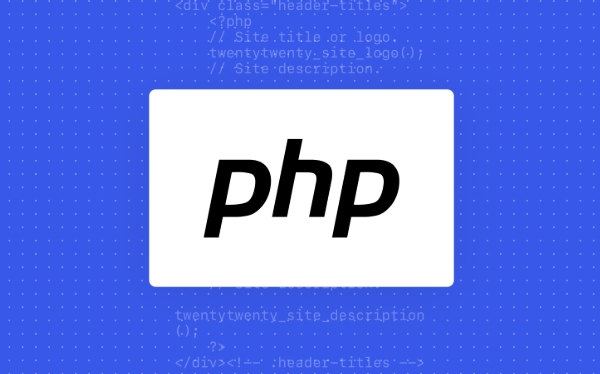The SPL interface solves practical problems in PHP development by providing standards such as Iterator, ArrayAccess, Countable and SeekableIterator. 1. Use Iterator to enable custom objects to support foreach traversal, such as user data collection classes; 2. Implementing ArrayAccess allows objects to access and modify data through square brackets like arrays, suitable for configuring containers or DTOs; 3. Combining Iterator, Countable and ArrayAccess can build complete collection classes, supporting traversal, counting and array operations, and is widely used in modern PHP collection libraries; 4. SeekableIterator allows positioning to specific locations, suitable for log reading or paging scenarios. These interfaces improve the readability, interoperability and maintainability of code, making custom classes behave like native PHP types, and are widely adopted by mainstream frameworks such as Laravel and Symfony. They are important practices in professional PHP development.

The SPL (Standard PHP Library) interfaces aren't just abstract concepts—they solve real-world problems in PHP development by promoting cleaner, more predictable code. While SPL provides classes and functions, its interfaces are especially useful for building reusable, interoperable components. Here's how they're practically applied in everyday PHP projects.

1. Iterating Custom Objects with Iterator
One of the most common uses of SPL interfaces is making custom objects traversable using Iterator .
By default, you can't use foreach on an object unless it implements Traversable —but since you can't implement Traversable directly, you use Iterator .

Practical Example: Imagine you're building a collection class to hold user data:
class UserCollection implements Iterator {
private array $users = [];
private int $position = 0;
public function __construct(array $users) {
$this->users = $users;
}
public function rewind(): void {
$this->position = 0;
}
public function current(): mixed {
return $this->users[$this->position];
}
public function key(): mixed {
return $this->position;
}
public function next(): void {
$this->position ;
}
public function valid(): bool {
return issue($this->users[$this->position]);
}
}Now you can loop over it naturally:

$collection = new UserCollection(['Alice', 'Bob', 'Charlie']);
foreach ($collection as $user) {
echo $user . PHP_EOL;
}Why it matters: This pattern is used in frameworks like Laravel (Eloquent collections) to make data structures feel native and intuitive.
2. Controlling Object Behavior with ArrayAccess
Want your objects to behave like arrays? Use ArrayAccess to allow syntax like $obj['key'] .
Use Case: Configuration containers or data transfer objects (DTOs).
class Config implements ArrayAccess {
private array $data;
public function __construct(array $data) {
$this->data = $data;
}
public function offsetExists(mixed $offset): bool {
return isset($this->data[$offset]);
}
public function offsetGet(mixed $offset): mixed {
return $this->data[$offset] ?? null;
}
public function offsetSet(mixed $offset, mixed $value): void {
$this->data[$offset] = $value;
}
public function offsetUnset(mixed $offset): void {
unset($this->data[$offset]);
}
}Now you can do:
$config = new Config(['host' => 'localhost', 'port' => 3306]); echo $config['host']; // 'localhost' $config['debug'] = true;
This is widely used in libraries like Symfony's
ParameterBagor Laravel'sRequestobject.
3. Combining Interfaces for Powerful Data Structures
Often, you'll combine multiple SPL interfaces to create robust, flexible classes.
For example, a collection that's iterable , countable , and array-like :
class Collection implements Iterator, Countable, ArrayAccess {
private array $items = [];
private int $position = 0;
public function __construct(array $items = []) {
$this->items = $items;
}
// Iterator methods...
public function rewind(): void { $this->position = 0; }
public function current(): mixed { return $this->items[$this->position]; }
public function key(): mixed { return $this->position; }
public function next(): void { $this->position ; }
public function valid(): bool { return $this->position < count($this->items); }
// Countable
public function count(): int {
return count($this->items);
}
// ArrayAccess
public function offsetExists(mixed $offset): bool {
return isset($this->items[$offset]);
}
public function offsetGet(mixed $offset): mixed {
return $this->items[$offset];
}
public function offsetSet(mixed $offset, mixed $value): void {
if (is_null($offset)) {
$this->items[] = $value;
} else {
$this->items[$offset] = $value;
}
}
public function offsetUnset(mixed $offset): void {
unset($this->items[$offset]);
}
}Now your object supports:
$collection = new Collection([1, 2, 3]);
foreach ($collection as $item) { /* ... */ }
echo count($collection); // 3
echo $collection[0]; // 1This is the foundation of modern PHP collection libraries.
4. Using SeekableIterator for Random Access
If you need to jump to a specific position (eg, pagination), use SeekableIterator .
class LogReader implements SeekableIterator {
private array $logs;
private int $position = 0;
public function __construct(array $logs) {
$this->logs = $logs;
}
public function seek(int $position): void {
if (!isset($this->logs[$position])) {
throw new OutOfBoundsException("Invalid position $position");
}
$this->position = $position;
}
// Other Iterator methods...
public function rewind(): void { $this->position = 0; }
public function current(): mixed { return $this->logs[$this->position]; }
public function key(): mixed { return $this->position; }
public function next(): void { $this->position ; }
public function valid(): bool { return issue($this->logs[$this->position]); }
}Usage:
$reader = new LogReader(['Error', 'Warning', 'Info']); $reader->seek(2); echo $reader->current(); // 'Info'
Useful in data processing where random access improves performance.
Key Benefits in Real Projects
- Framework Interoperability: SPL interfaces let your classes work seamlessly with tools expecting traversable or countable types.
- Type Hinting & Predictability: You can type-hint
Countable,Iterator, etc., making APIs clearer. - Cleaner Syntax: Users of your classes get natural PHP syntax (
foreach,count(),[]access). - Reduced Boilerplate: instead of writing custom
getIterator()orgetSize()methods, you conform to standards.
Basically, SPL interfaces help you write classes that feel like native PHP types . Whether you're building a config manager, a data collection, or a custom list, implementing these interfaces make your code more independent and consistent. It's not just theoretical—it's practical, widely adopted, and essential for professional PHP development.
The above is the detailed content of The Practical Application of Spl Interfaces in PHP. For more information, please follow other related articles on the PHP Chinese website!

Hot AI Tools

Undress AI Tool
Undress images for free

Undresser.AI Undress
AI-powered app for creating realistic nude photos

AI Clothes Remover
Online AI tool for removing clothes from photos.

Clothoff.io
AI clothes remover

Video Face Swap
Swap faces in any video effortlessly with our completely free AI face swap tool!

Hot Article

Hot Tools

Notepad++7.3.1
Easy-to-use and free code editor

SublimeText3 Chinese version
Chinese version, very easy to use

Zend Studio 13.0.1
Powerful PHP integrated development environment

Dreamweaver CS6
Visual web development tools

SublimeText3 Mac version
God-level code editing software (SublimeText3)

Hot Topics
 php regex for password strength
Jul 03, 2025 am 10:33 AM
php regex for password strength
Jul 03, 2025 am 10:33 AM
To determine the strength of the password, it is necessary to combine regular and logical processing. The basic requirements include: 1. The length is no less than 8 digits; 2. At least containing lowercase letters, uppercase letters, and numbers; 3. Special character restrictions can be added; in terms of advanced aspects, continuous duplication of characters and incremental/decreasing sequences need to be avoided, which requires PHP function detection; at the same time, blacklists should be introduced to filter common weak passwords such as password and 123456; finally it is recommended to combine the zxcvbn library to improve the evaluation accuracy.
 PHP Variable Scope Explained
Jul 17, 2025 am 04:16 AM
PHP Variable Scope Explained
Jul 17, 2025 am 04:16 AM
Common problems and solutions for PHP variable scope include: 1. The global variable cannot be accessed within the function, and it needs to be passed in using the global keyword or parameter; 2. The static variable is declared with static, and it is only initialized once and the value is maintained between multiple calls; 3. Hyperglobal variables such as $_GET and $_POST can be used directly in any scope, but you need to pay attention to safe filtering; 4. Anonymous functions need to introduce parent scope variables through the use keyword, and when modifying external variables, you need to pass a reference. Mastering these rules can help avoid errors and improve code stability.
 How to handle File Uploads securely in PHP?
Jul 08, 2025 am 02:37 AM
How to handle File Uploads securely in PHP?
Jul 08, 2025 am 02:37 AM
To safely handle PHP file uploads, you need to verify the source and type, control the file name and path, set server restrictions, and process media files twice. 1. Verify the upload source to prevent CSRF through token and detect the real MIME type through finfo_file using whitelist control; 2. Rename the file to a random string and determine the extension to store it in a non-Web directory according to the detection type; 3. PHP configuration limits the upload size and temporary directory Nginx/Apache prohibits access to the upload directory; 4. The GD library resaves the pictures to clear potential malicious data.
 Commenting Out Code in PHP
Jul 18, 2025 am 04:57 AM
Commenting Out Code in PHP
Jul 18, 2025 am 04:57 AM
There are three common methods for PHP comment code: 1. Use // or # to block one line of code, and it is recommended to use //; 2. Use /.../ to wrap code blocks with multiple lines, which cannot be nested but can be crossed; 3. Combination skills comments such as using /if(){}/ to control logic blocks, or to improve efficiency with editor shortcut keys, you should pay attention to closing symbols and avoid nesting when using them.
 How Do Generators Work in PHP?
Jul 11, 2025 am 03:12 AM
How Do Generators Work in PHP?
Jul 11, 2025 am 03:12 AM
AgeneratorinPHPisamemory-efficientwaytoiterateoverlargedatasetsbyyieldingvaluesoneatatimeinsteadofreturningthemallatonce.1.Generatorsusetheyieldkeywordtoproducevaluesondemand,reducingmemoryusage.2.Theyareusefulforhandlingbigloops,readinglargefiles,or
 Tips for Writing PHP Comments
Jul 18, 2025 am 04:51 AM
Tips for Writing PHP Comments
Jul 18, 2025 am 04:51 AM
The key to writing PHP comments is to clarify the purpose and specifications. Comments should explain "why" rather than "what was done", avoiding redundancy or too simplicity. 1. Use a unified format, such as docblock (/*/) for class and method descriptions to improve readability and tool compatibility; 2. Emphasize the reasons behind the logic, such as why JS jumps need to be output manually; 3. Add an overview description before complex code, describe the process in steps, and help understand the overall idea; 4. Use TODO and FIXME rationally to mark to-do items and problems to facilitate subsequent tracking and collaboration. Good annotations can reduce communication costs and improve code maintenance efficiency.
 Quick PHP Installation Tutorial
Jul 18, 2025 am 04:52 AM
Quick PHP Installation Tutorial
Jul 18, 2025 am 04:52 AM
ToinstallPHPquickly,useXAMPPonWindowsorHomebrewonmacOS.1.OnWindows,downloadandinstallXAMPP,selectcomponents,startApache,andplacefilesinhtdocs.2.Alternatively,manuallyinstallPHPfromphp.netandsetupaserverlikeApache.3.OnmacOS,installHomebrew,thenrun'bre
 Learning PHP: A Beginner's Guide
Jul 18, 2025 am 04:54 AM
Learning PHP: A Beginner's Guide
Jul 18, 2025 am 04:54 AM
TolearnPHPeffectively,startbysettingupalocalserverenvironmentusingtoolslikeXAMPPandacodeeditorlikeVSCode.1)InstallXAMPPforApache,MySQL,andPHP.2)Useacodeeditorforsyntaxsupport.3)TestyoursetupwithasimplePHPfile.Next,learnPHPbasicsincludingvariables,ech






